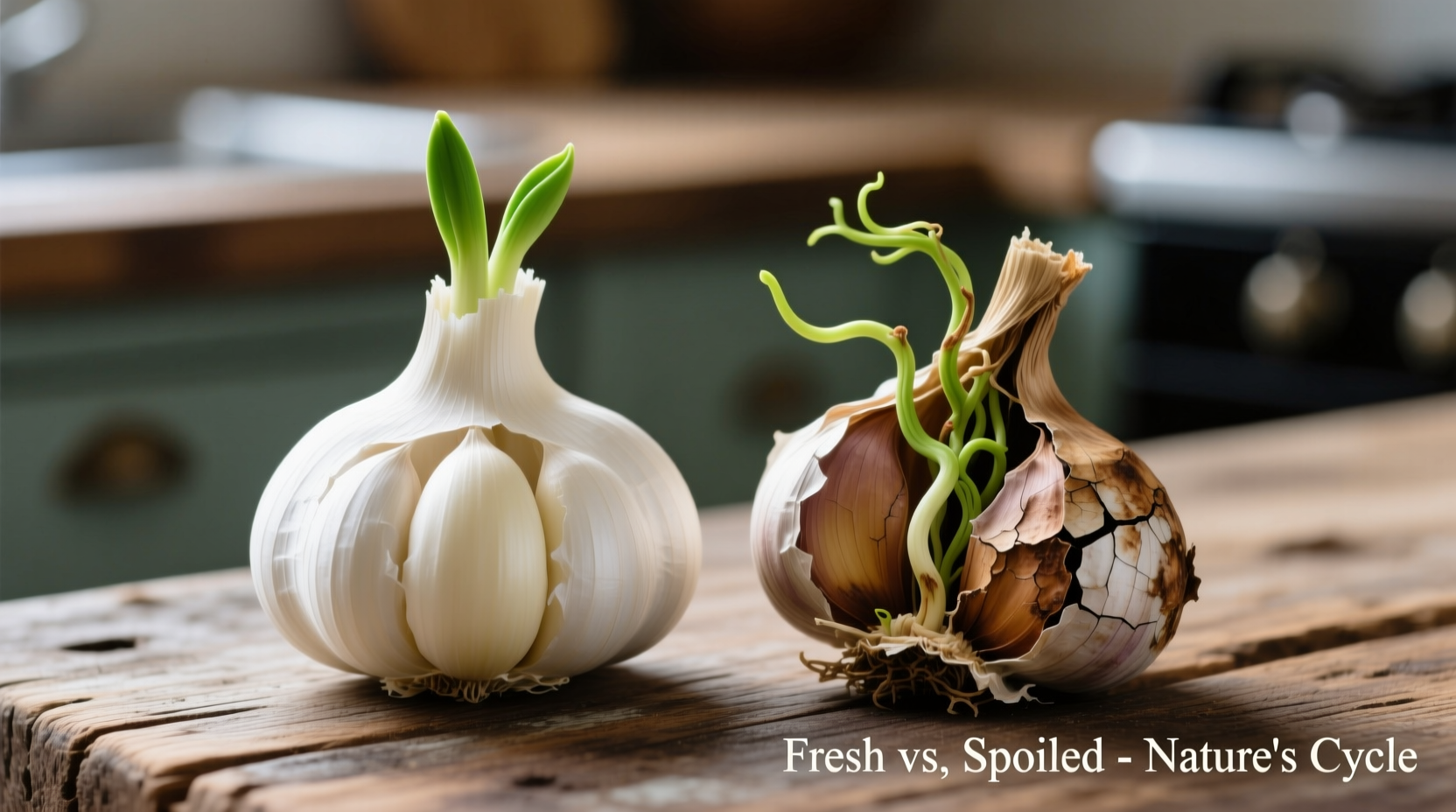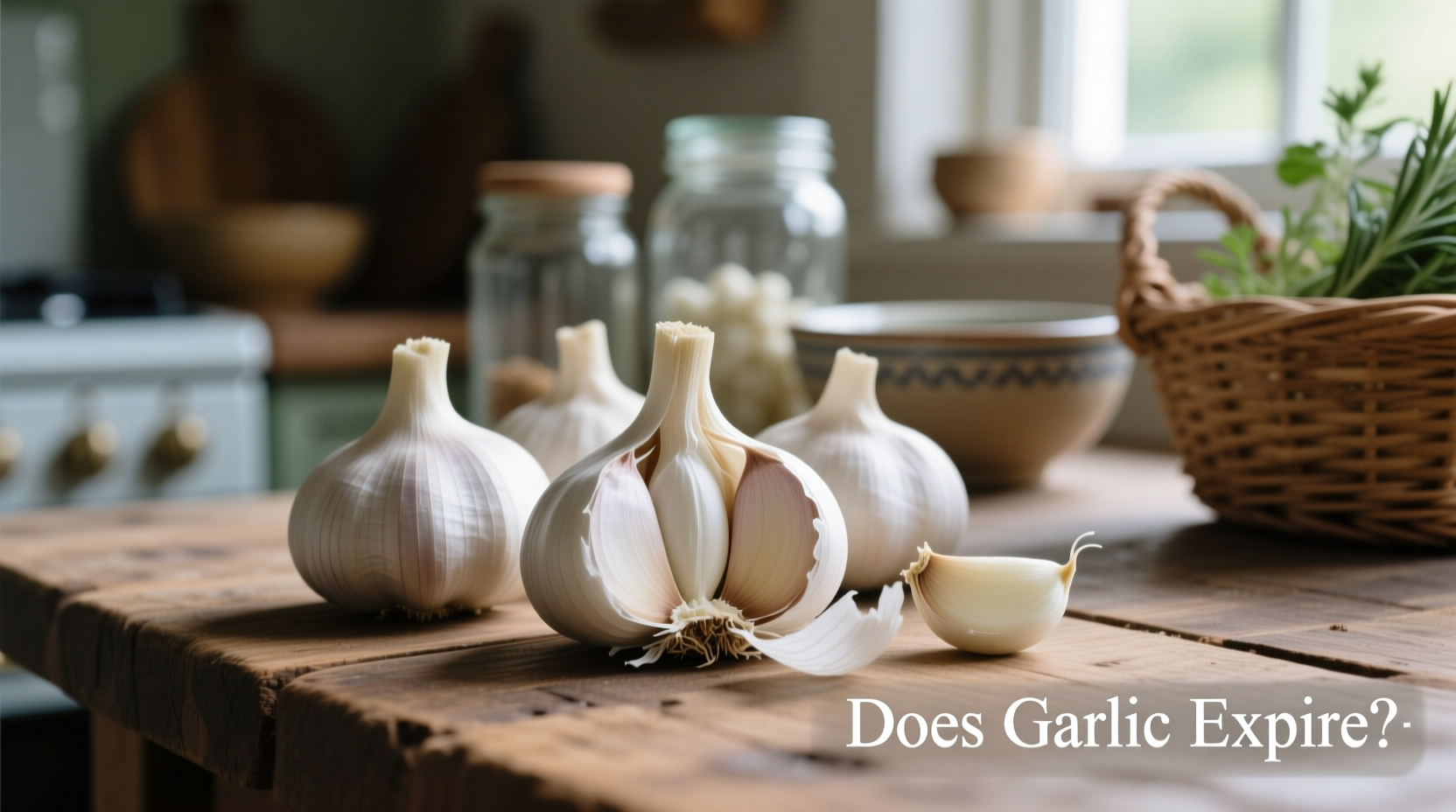Yes, garlic does expire. Whole garlic bulbs last 3-6 months when stored properly in a cool, dark place, while individual cloves last 7-10 days. Peeled or chopped garlic should be used within 1-2 days at room temperature or up to 1 week refrigerated. Proper storage significantly extends garlic's shelf life and maintains its flavor potency.
How Long Does Garlic Really Last? A Complete Shelf Life Guide
Garlic transforms ordinary dishes into culinary masterpieces, but like all fresh produce, it has a limited lifespan. Understanding garlic's expiration timeline helps prevent food waste while ensuring optimal flavor in your cooking. Let's explore exactly how long different forms of garlic remain fresh and safe to eat.
The Garlic Freshness Timeline: From Harvest to Spoilage
Garlic follows a predictable freshness pattern when stored correctly. This timeline shows how garlic quality degrades over time under proper storage conditions:
| Garlic Form | Room Temperature | Refrigerated | Best Quality Period |
|---|---|---|---|
| Whole bulb (unpeeled) | 3-6 months | Not recommended | First 2 months |
| Individual cloves (unpeeled) | 7-10 days | 10-14 days | First week |
| Peeled cloves | 1-2 days | 7-10 days | First 3 days |
| Chopped/minced | Several hours | 5-7 days | First 48 hours |
| Garlic in oil | Discard immediately | 3-4 days | First 48 hours |
This freshness timeline comes from the USDA Food Safety and Inspection Service, which provides science-based recommendations for safe food storage practices.
How to Spot Expired Garlic: 5 Clear Warning Signs
Before using garlic, perform this quick freshness check. Expired garlic shows these unmistakable signs:
- Texture changes - Soft spots, mushiness, or slimy coating indicate spoilage
- Color shifts - Yellow or brown discoloration means garlic is past its prime
- Unpleasant odor - Sour or ammonia-like smell replaces garlic's characteristic aroma
- Visible mold - Fuzzy white, green, or black spots signal contamination
- Green sprouts - While not dangerous, sprouting indicates aging and diminished flavor
According to food safety experts at the Centers for Disease Control and Prevention, garlic showing multiple spoilage signs should be discarded immediately to prevent potential foodborne illness.

Proper Garlic Storage: Extending Freshness Without Compromising Safety
Maximize your garlic's shelf life with these professional storage techniques:
Whole Bulbs: The Breathing Method
Store unpeeled bulbs in a cool (60-65°F), dark, well-ventilated area. Never use plastic bags - try mesh bags, paper bags with holes, or traditional garlic keepers. Avoid refrigeration, which promotes sprouting and mold growth.
Peeled Cloves: The Airtight Approach
Place in an airtight container with a paper towel to absorb moisture. Change the paper towel daily. Refrigerate immediately - room temperature storage invites bacterial growth.
Chopped Garlic: The Oil Controversy
While convenient, storing garlic in oil creates ideal conditions for Clostridium botulinum growth. If preparing garlic in oil, use within 24 hours and always refrigerate. The FDA specifically warns against room temperature storage of garlic-in-oil mixtures.
When Is Sprouted Garlic Still Safe to Use?
Green sprouts inside garlic cloves often worry home cooks. Here's what culinary science reveals:
- Sprouted garlic remains safe to eat if firm and free from mold
- The green sprout has a bitter taste that can affect dish flavor
- Simply remove the green sprout before using the remaining clove
- Significantly sprouted garlic has reduced allicin content (garlic's active compound)
Research from the National Center for Biotechnology Information confirms that sprouted garlic maintains antioxidant properties, though flavor intensity decreases as sprouting progresses.
Food Safety First: When Garlic Becomes Dangerous
While most expired garlic simply loses flavor, certain conditions create genuine food safety risks:
- Garlic in oil at room temperature - Can cause botulism poisoning
- Moldy garlic - Some molds produce dangerous mycotoxins
- Garlic with soft, slimy texture - Indicates bacterial growth
The World Health Organization emphasizes that botulism from improperly stored garlic products is rare but potentially fatal. When in doubt about garlic safety, follow the chef's golden rule: "When freshness is questionable, the safest choice is to throw it out."
Maximizing Garlic Flavor: Practical Kitchen Tips
Professional chefs use these techniques to get the most from your garlic:
- Crush cloves with the flat side of a knife before chopping to release maximum flavor compounds
- Add minced garlic to dishes in the last 1-2 minutes of cooking to preserve volatile compounds
- Freeze excess chopped garlic in olive oil for future use (up to 6 months)
- Store roasted garlic in the refrigerator for 1 week for quick flavor enhancement
Remember that garlic's flavor intensity diminishes over time. Older garlic may require slightly larger quantities to achieve the same flavor impact as fresh garlic.











 浙公网安备
33010002000092号
浙公网安备
33010002000092号 浙B2-20120091-4
浙B2-20120091-4